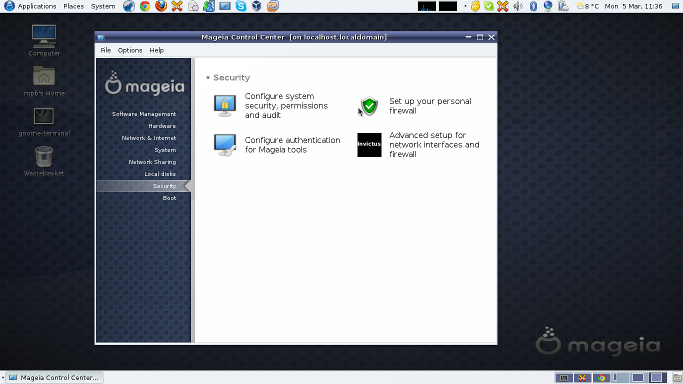
High Performance Remote Access and Desktop Virtualisation to a Physical or Virtual desktop via.
#NOMACHINE LINUX MAC OSX#
All other users will connect to the desktop of such DisplayOwner. NoMachine NX Server Solutions for Windows, Mac OSX and Linux. To instruct the Enterprise Desktop to create a virtual display for the user specified in DisplayOwner.
#NOMACHINE LINUX HOW TO#
RHEL 6 and earlier versions), reboot the machine at runlevel 3:įor the Enterprise Desktop: how to enable the creation of NoMachine display serviceġ) Edit /usr/NX/etc/server.cfg and enable the following keys (remove the prepending #):

Note If the Linux system doesn't have systemd (e.g. Or, if you don't know what it is, use the "display-manager" alias:Īt this point NoMachine will create its own virtual framebuffer and you should be able to connect and see the desktop. If you wish to use the NoMachine version for your Kali Linux 2020 system architecture, select it on the Download page. It is therefore necessary to download the DEB binary package from the NoMachine For Linux Downloads website. Use the proper command to stop the X server according to your display manager, for example: It is not possible to download the NoMachine installation package from Kali Linux’ default repositories. You can use any of the solutions above or stop the X server manually, in order to make NoMachine use its own display service:
#NOMACHINE LINUX INSTALL#
In case of a Linux host it's necessary to reboot the machine or restart the display manager to make this operative.Ģ) Setup Xorg for working in headless modeĢ.1) For NVIDIA GPUs and proprietary driver only, another possibility is to configure X.org to run headless (use -allow-empty-initial-configuration)Ģ.2) Install a Xorg dummy driver by creating fake EDID (Extended Display Identification Data) and use it in nf (EDID are stored in the monitor and read out by the GPU when monitor is connected)
#NOMACHINE LINUX FULL#
In this case NoMachine doesn't use its own virtual display because it detects that the X server running.Ī common solution, valid for all the supported Operating Systems, is to adopt a fake display dongle (also called 'dummy dongle') inserted in the video card port to simulate the presence of a screen and force the system to take full advantage of the GPU as if a real monitor is connected. This ability, enabled by default in the free edition of NoMachine, can be activated also in the commercial versions (see instructions for the Enterprise Desktop at the end of this article).Ī specific case which leads to black screen on Linux is when the X server is running but it is not rendering because the video card is turned off. NoMachine is able to detect when the X server is not running and run its own virtual display, which is an embedded X server. Results of vim /usr/NX/etc/server.NoMachine is designed to work out-of-the-box on Linux headless machines provided a desktop environment is installed. Am I trying something fundamentally impossible? Taking a completely wrong approach? Missing some small details? Let me know if I can give anyone any more context/information. I did ssh port forwarding on my MacBook (home computer): ssh -L 4001:myPersonalWorkComputer:22 thought I just be able to use the No Machine client on my MacBook to remote into localhost:4001 and get redirected to my personal work computer but it isn't work. (I don't anything when I run netstat -na | grep 4001 though) NoMachine Service (a remote desktop service) is running on my personal work computer on port 4001. I thought I did everything right using NoMachine but I think I need some pointers. Now I would like to access my work computer (running Ubuntu 14.04) from my personal computer on my home network using a GUI. It will automatically detect the systems running with NoMachine service on the same network. Launch the NoMachine application on your system. The Nomachine application to connect remote systems running with NoMachine service. The Nomachine installer will install an application as well as service. Normally I don't require a GUI so I just ssh into the ssh server from a home computer (MacBook) and then ssh into my personal work computer (Ubuntu 14.04) on the lan. Step 2 Connect Remote Desktop with NoMachine. The ssh server is listening to the default port 22.

My question is very similar to this question: Remote into Linux workstation behind a firewall


 0 kommentar(er)
0 kommentar(er)
